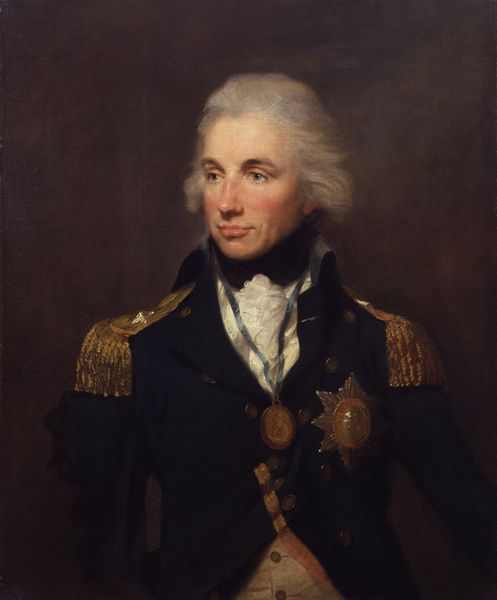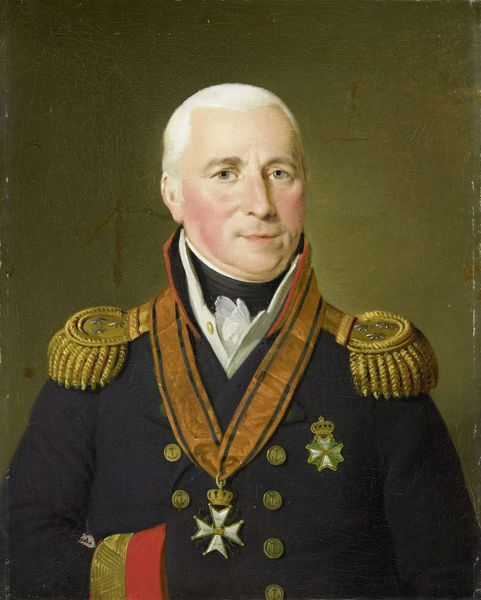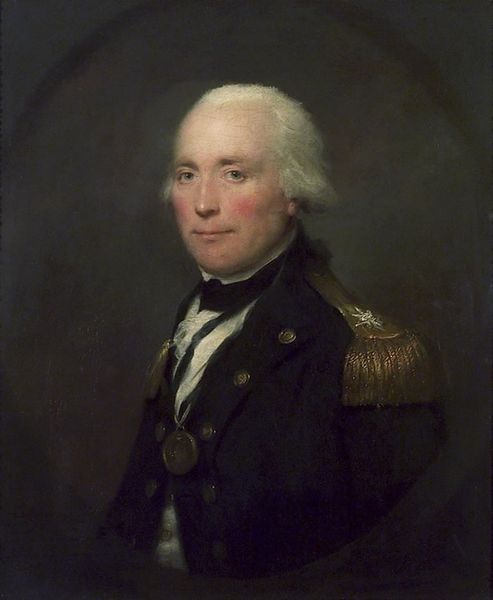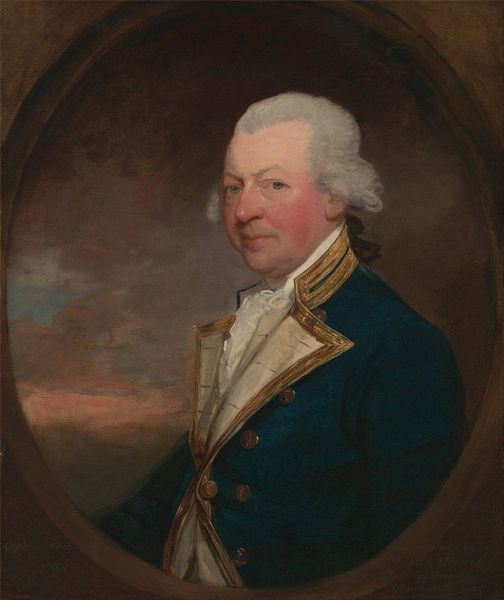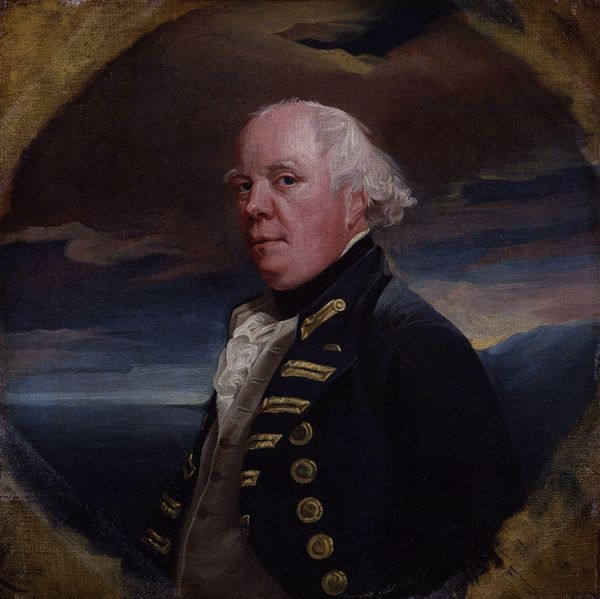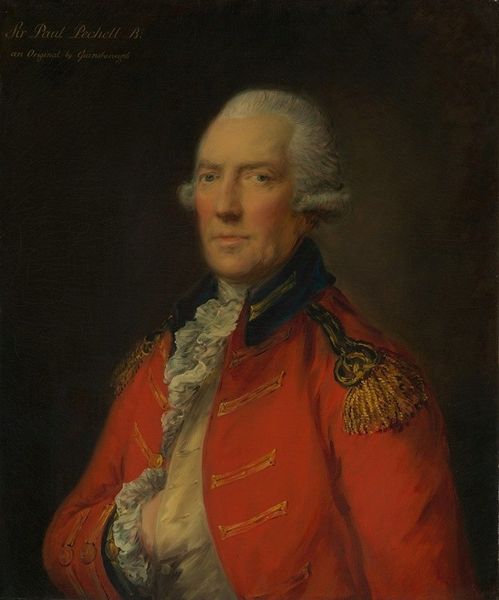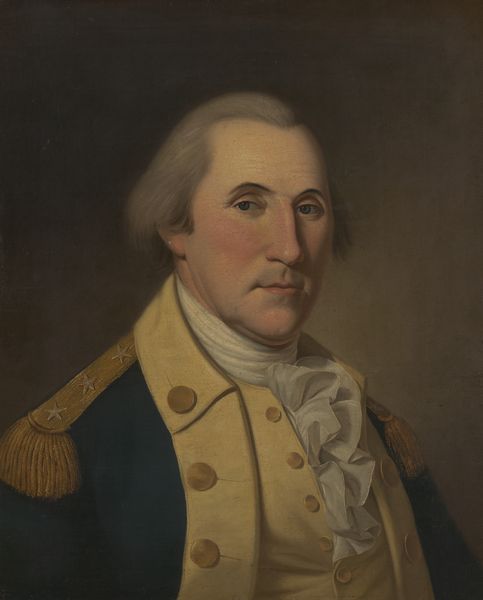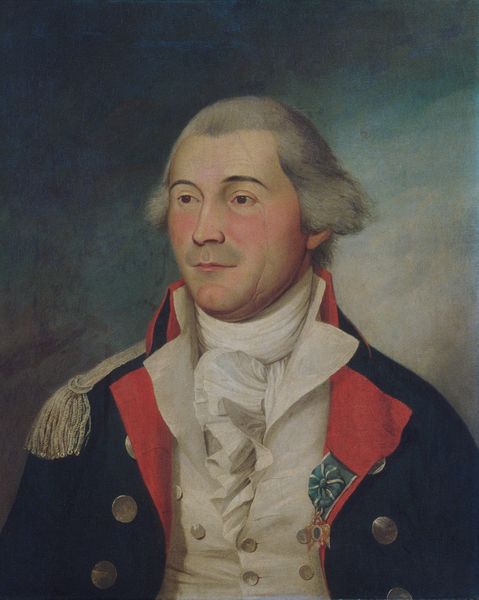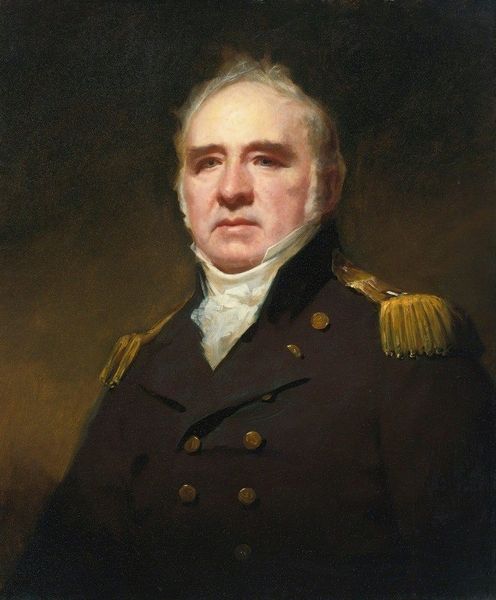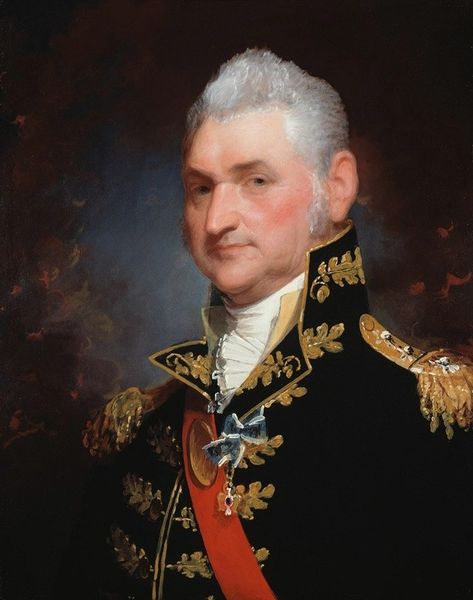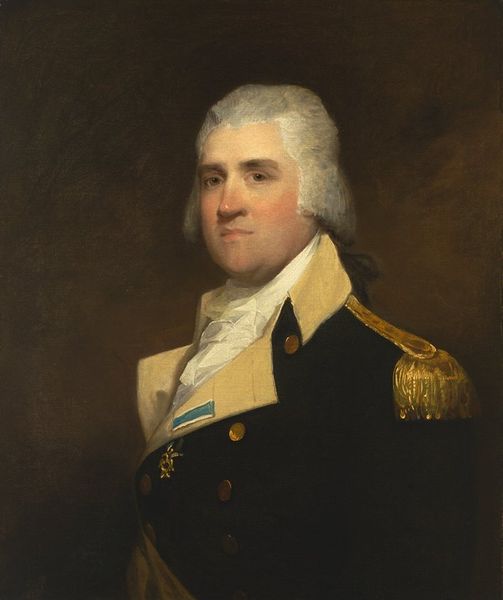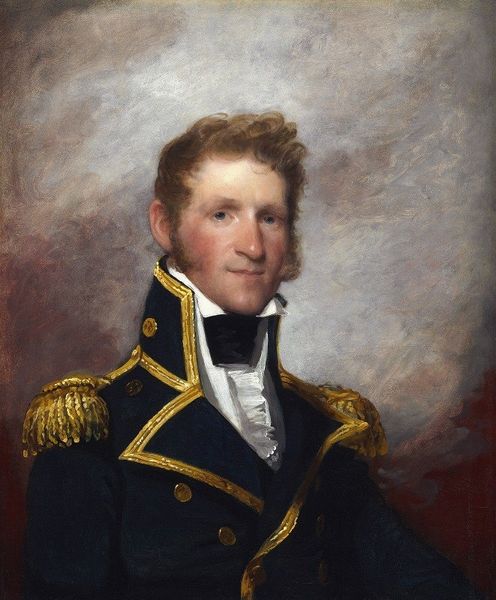
painting, oil-paint
#
portrait
#
portrait
#
painting
#
oil-paint
#
romanticism
#
history-painting
#
realism
Copyright: Public domain
Curator: Here we have a portrait, purportedly of Captain John Cooke, attributed to Lemuel Francis Abbott. It embodies elements of Romanticism and realism. Editor: My first thought is how somber it feels, yet those exquisitely rendered gold details on his navy coat offer such a striking contrast. What do we know about its making? Curator: Unfortunately, we lack a firm date for the piece. Abbott was a prominent portraitist, known for capturing naval figures during a time of great maritime power. It speaks to a society invested in celebrating its military heroes through painted effigies. Editor: Right, so considering its social context: The craftsmanship in the uniform detailing stands out. All those layers of gold braid—someone’s labour went into those. It is quite meticulous and, from a maker's perspective, rather captivating. Curator: The piece does feel rather idealized. Abbott crafted an image of leadership and authority, fitting within a larger trend of portraying national heroes. Editor: True. While Abbott highlights Captain Cooke's status with that refined aesthetic, what interests me most are the visible brushstrokes in the background. It reminds me about the hands, skills, and material behind it, and challenges my idea of ‘high art.’ It reminds me that art-making, like many activities during wartime, depended on collective labour. Curator: The painting offers insight into the visual construction of heroism. Think about how such images shaped public perception and bolstered a certain patriotic sentiment. The powerful, solemn military figure! Editor: Precisely, we often discuss aesthetics of a portrait, yet materials offer an alternative entry to analyzing art. The uniform itself as material, like the portrait, is coded with values relating to labor and skill and even social-economical capital. It tells another side of the story that differs from conventional history writing. Curator: An interesting observation, a useful point of departure. Perhaps it brings a fresh interpretation, or invites deeper consideration. Editor: Absolutely. It reminds us that portraits, like the uniforms depicted within them, reflect both individual identities and broader networks of production.
Comments
No comments
Be the first to comment and join the conversation on the ultimate creative platform.
